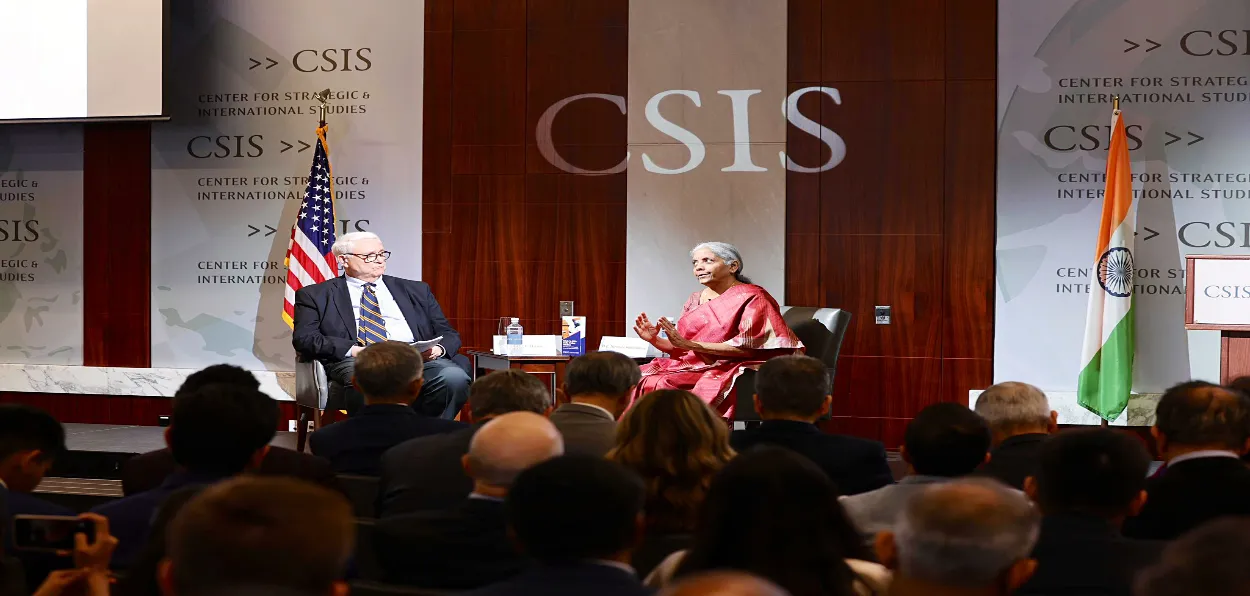
 Sushma Ramachandran
Sushma Ramachandran
India is slowly but surely climbing up the ladder to rub shoulders with global economic superpowers. It has become the world’s fourth-largest economy, surpassing Japan, and is now behind only the U.S., China and Germany.
The country’s new status was confirmed by Niti Aayog CEO BVR Subrahmanyam on the basis of data compiled by the International Monetary Fund (IMF). The only caveat is that per capita GDP still needs to be raised substantially so that the benefits of development are able to uplift all segments of society. Even so, the very fact that other economic parameters have expanded rapidly in recent years is an indicator that this lacuna will also be made up in the coming years.
The emergence of India as a major economic player comes in the backdrop of a slowing world economy. Multilateral institutions like the United Nations are highlighting the fact that India is a bright spot at a time when most major economies are showing a decline in their growth rates. In its latest World Economic Situation, the U.N. has projected that China will grow by 4.6 percent in 2025 from five percent in the previous year. Similarly, it expects 1.6 percent growth for the U.S. compared to 2.8 percent last year. It estimates a marginal growth of 0.7 percent for Japan and one percent for the European Union. Emerging economies Brazil, Mexico, and South Africa are also facing growth downgrades owing to multiple factors like depressed trade and investments.
In contrast, the Indian economy is projected to grow by 6.3 cent in 2025-26. This is lower than 7.1 per cent recorded last year but this remains more buoyant than most other countries.
Even the Reserve Bank of India has highlighted this fact recently. In its latest annual report, the central bank notes the country is poised to sustain its position as the fastest-growing major economy in 2025-26 supported by a pickup in private consumption, healthy balance sheets of banks and corporates, easing financial conditions, and the continued thrust on public capital expenditure. It goes on to add that easing of supply chain pressures, softening of global commodity prices, and higher agricultural production on the back of a likely above-normal southwest monsoon augur well for the inflation outlook in the current fiscal. At the same time, it warns that financial markets may exhibit sporadic episodes of volatility triggered by turbulent global financial markets in the wake of heightened uncertainty regarding of evolution of tariff policies.
As far as per capita GDP is concerned, however, it must be recognised that it has not reached desired levels. Currently, per capita GDP is of the order of 3000 dollars. This is in comparison to 13690 dollars in the case of China. It is far higher for developed economies like Germany and the U.S., which are at 54,343 dollars and 81,695 dollars respectively. Similarly, Japan which has an economy of roughly the same size as India - 4 trillion dollars - has a per capita GDP of 33,834 dollars.
The jubilation over the expansion of the Indian economy to become the fourth largest in the world must therefore be tempered by the fact that this parameter needs to be improved significantly. A comparison with other South Asian countries shows that India’s situation is better than Pakistan but Bangladesh and Sri Lanka are at higher levels. Pakistan has a per capita GDP of 1561 dollars while it is 2555 dollars for Bangladesh. Per capita GDP is higher, however, at 4516 dollars in Sri Lanka.
One of the reasons for the relatively lower per capita GDP is the large population estimated at 140 crore. With such a huge denominator while calculating per capita GDP, the final result is bound to be significantly reduced. Another factor is wide income inequality with the richest ten percent holding a disproportionate share of wealth. Regional disparities are yet another reason for the relatively low per capita GDP. Some states like Bihar, for instance, are way behind the rest of the country in terms of most developmental indicators. On the other hand, other states, especially those in the southern region, have been growing faster than the rest of the country.
The only way to achieve higher per capita GDP is for the economy to expand even further at a faster pace. As it is, the country has been growing at roughly six to seven percent in recent years. This has enabled the economy to grow from 3 trillion dollars to four trillion dollars over only four years. In other words, it is time to move to a higher growth path of eight to nine percent to improve per capita incomes more quickly.
One of the biggest obstacles, however, in achieving this goal is the continuation of geopolitical uncertainties. These include strife with Pakistan, conflicts in Ukraine and Gaza, as well as the new tariff and trade policies being launched by the Trump administration. Navigating these issues has not been an easy task for any emerging economy, though India has done better than most others. On the plus side, it has managed to contain inflationary pressures and improve trade flows despite global recessionary trends. On the minus side, it has had to deal with the recent near-war hostilities with its western neighbour that could recur despite the existence of a tenuous ceasefire agreement.
READ MORE: Purkazi leader Zaheer Farooqui shows the way to transforming India at grassroots
India’s emergence as a four-trillion-dollar economy thus needs to be viewed in the larger context of the journey towards becoming a developed nation. It needs to focus on even more rapid growth despite external headwinds and the potential for border hostilities. It must also continue with the process of reforms and liberalisation, as this is the only way to achieve faster expansion of the economy.
The author is a veteran journalist who writes on the economy and global issues.
